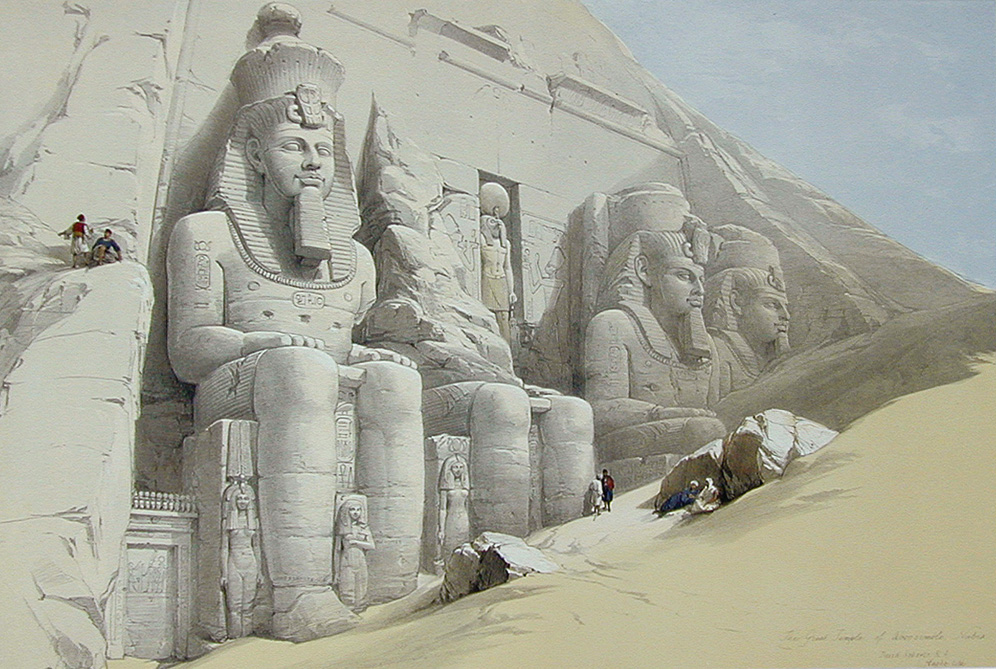
To rid his hired boat of rats, he had it submerged for a full night and then
cleaned. With his drawing supplies and provisions loaded aboard, he and his
crew of eight began their journey up the Nile. His plan was to complete the
up-river voyage as quickly as possible, doing basic measurements and observations
of the monuments as he went. With this knowledge in hand, he would then do the
bulk of his sketching as he came down the river.
As he traveled up the Nile, Roberts was joined by a fellow Englishman, Captain
Nelly, who served as his interpreter, and by another boat hired by a tourist
named Vanderhost. After over three weeks travel time, the party reached the
first cataract of the Nile, over which their boats were laboriously hauled.
On November 1st, 1838, Roberts reached his most southerly destination, the great
temple of Abu Simbal, some 500 miles up-river from Cairo. Here he began his
work in earnest, making several drawings of this famous monument which were
to be the basis for some some of his best known lithographs. (View
the lithographs of Abu Simbal.)

At this time many of the Nile temples, left unattended for hundreds of years,
were partly buried in the constantly shifting sands. Though they have long since
been fully excavated, it is this state of mysterious ruin depicted in Roberts'
drawings that lends such an air of romance to his works, greatly contributing
to their enduring popularity. As any collector of Roberts' prints will attest,
many other contemporary artists covered the same subjects, but none of their
works have the life and flair of Roberts' drawings. Though the locations are
in great measure accurately reproduced, Roberts did not hesitate to put his
theatrical background to good use, embellishing a detail here and moving a rock
or wall there when the atmosphere of the work would benefit.







